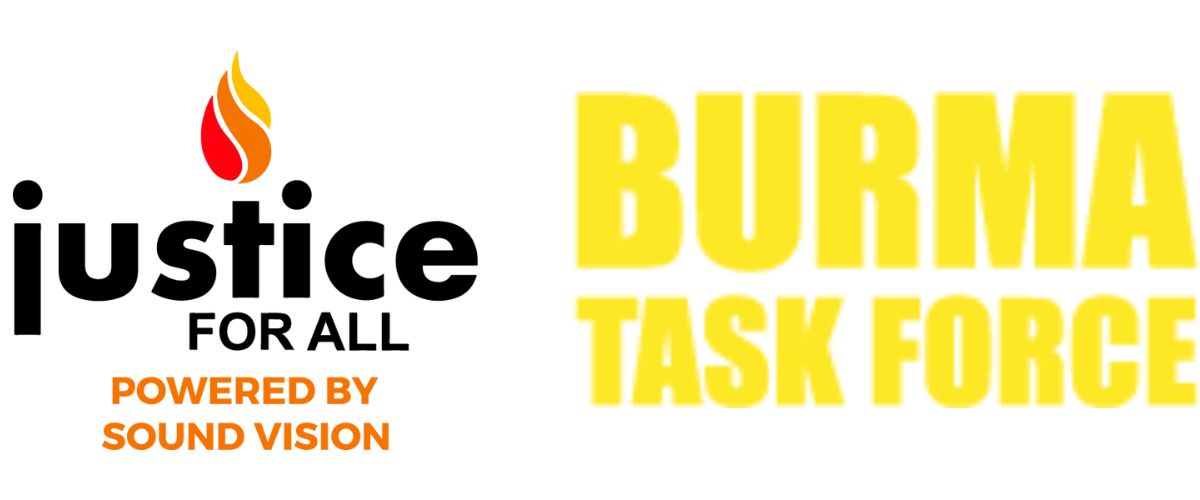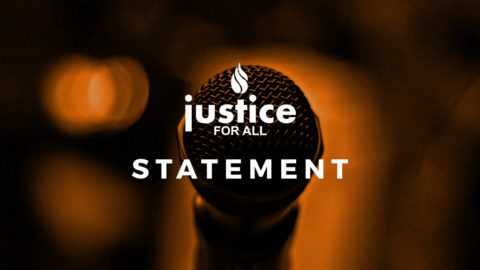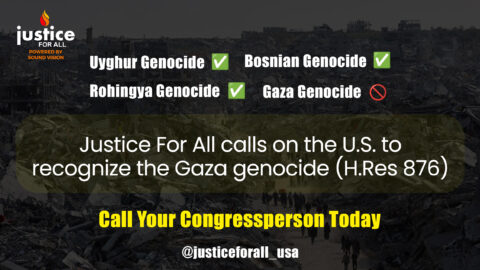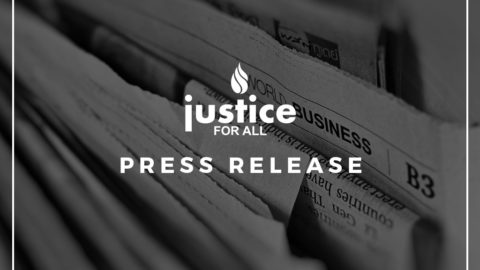Justice For All condemns in the strongest possible terms the Israeli military’s violent raid on…
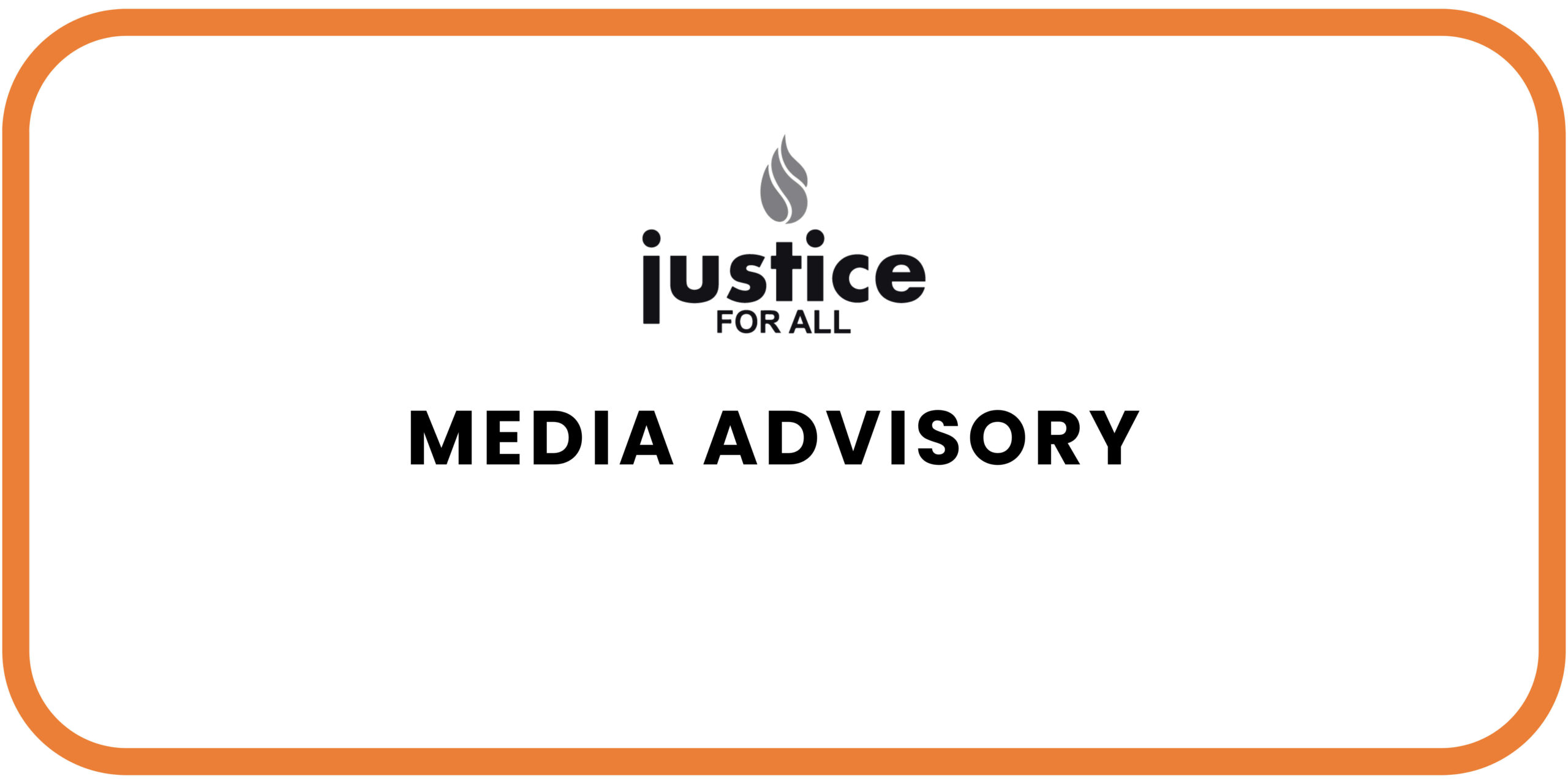
Media Guidance: Ethical Coverage of the Starvation of Gaza
Justice For All and Justice For All Canada call on American and Canadian journalists to adhere to the highest standards of accuracy, context, and human dignity when reporting on the mass starvation unfolding in Gaza. This humanitarian catastrophe, documented by U.N. agencies, humanitarian organizations, and journalists on the ground, is not a natural disaster. It is the result of deliberate policy decisions under a full military siege and blockade.
As famine conditions intensify, the press must avoid euphemisms and uncritical repetition of official narratives. Coverage must be based on facts, legal context, and lived realities, ensuring the public is accurately informed about the nature and scale of this crisis.
Key Ethical Guidelines for Covering the Starvation of Gaza
Attribute Responsibility Transparently and Reliably
Reporting must clarify that this crisis is not due to a lack of global food supply, but due to intentional obstruction of aid.
- Nearly 900 civilians have been killed by Israeli forces while attempting to access food aid, with thousands more injured, after recieving assurances of safe passage to access life-saving aid.
- Aid delivery has been deliberately obstructed by state-sanctioned policies disguised as bureaucratic hurdles, leaving thousands of aid trucks and medical supplies stranded just outside of Gaza. There is enough food to feed Gaza.
- Multiple U.N. agencies, including WFP and OCHA, have stated that the starvation is a man-made disaster, not collateral damage.The root cause of this mass starvation is not the lack of food and water, but rather the systematic and deliberate denial of these life-saving resources.
Journalists should:
- Avoid framing the famine as an unfortunate byproduct of war.
- Name the blockade and denial of aid for what they are: intentional policies with catastrophic outcomes.
Report the Scale and Severity Accurately
Journalists must clearly convey the unprecedented scale of hunger, malnutrition, and starvation in Gaza, drawing from trusted sources such as:
- The UN World Food Programme, which reports that one-quarter of Gaza’s population is facing famine-like-conditions, with nearly 100,000 women and children suffering from acute malnutrition.
- The World Health Organization, which has confirmed the deaths of over 111 Palestinians from malnutrition, with 5100 more being admitted to the malnutrition programme, including 880 with severe malnutrition.
- The UN Special Rapporteur on the Right to Food, Michael Fakhri, who described Gaza as enduring starvation “not witnessed in modern history,” citing 20 months of Israeli-imposed aid restrictions.
Journalists should:
- Use urgent and factual language: “famine,” “mass starvation,” “state-enabled hunger.”
- Avoid vague terms like “food insecurity” or “deepening humanitarian crisis” when evidence supports stronger terminology.
Center Human Dignity
Effective Journalism should reflect not just numbers, but the lived experience of those enduring the crisis.
- Residents and doctors in Gaza describe the famine as a “slow, painful death playing out in real time” with children “crying from hunger” and families “asking for anything, not enough.”
- U.N. staff have testified that there is “no way to escape” and that “everything around people is death.”
- Medical professionals in Gaza report going without food themselves while attempting to still serve patients in hospitals that have been turned into trauma wards.
Deeper Dive: Local Testimony
While foreign journalists have been denied access to Gaza since October 2023, and most local Palestinian journalists are operating under extreme, life-threatening conditions-many barely able to eat, rest, or access fuel for communication-their testimony remains essential and morally urgent.
Despite facing bombardment, displacement, and starvation, local journalists, doctors, and aid workers continue to document the crisis in fragments, through voice notes, WhatsApp messages, and emergency dispatches.
Journalists outside Gaza should:
- Amplify the fragmented but powerful testimony still emerging from Palestinians inside Gaza.
- Reference and cite verified translations, audio dispatches, and testimony gathered by trusted local or international outlets (e.g., Al Jazeera, Euro-Med Human Rights Monitor, We Are Not Numbers).
- Acknowledge the systematic silencing of the press as part of the broader repression.
Silencing local voices through starvation and bombardment is itself a tactic of erasure. Responsible media must treat this not as a gap, but as part of the story.
Ensure Balanced Use of Sources and Scepticism of Official Narratives
Coverage of the humanitarian crisis must be cautious in reproducing unverified claims or euphemistic language from any government or military source. Rather, journalists must apply:
- Independent verification standards for all official statements, including those from Israeli and U.S. officials.
- Critical scrutiny to any claims about humanitarian conditions that contradict the on-the-ground assessments from recognized and reliable international bodies such as the U.N., WHO, WFP, and other NGOs.
Incorporate Legal and Humanitarian Frameworks
Journalists have an obligation to provide the international legal context of the ongoing crisis:
- The Geneva Conventions obligate occupying powers to provide food and medical supplies to civilians under occupation.
- The Rome Statute of the International Court of Justice has classified “intentional starvation of civilians” as a war crime.
- The U.N. top legal body, the International Court of Justice, has found the charge of genocide in Gaza “plausible” and has issued provisional mesaures calling for the prevention of further harm.
- The International Criminal Court has issued arrest warrants for both Israeli Prime Minister Benjamin Netanyahu and former Minister of Defense Yoav Gallant for alleged war crimes and crimes against humanity, including the use of starvation as a weapon and targeting civilians in Gaza.
Contextualize the Current Catastrophe Within the Broader Siege and Displacement
The starvation of Gaza is not happening in isolation but within a broader context of:
- A 17-year blockade
- Mass displacement of over 2 million people, with 88% of Gaza now uninhabitable or militarized.
- Repeated attacks on humanitarian infrastructure, including aid warehouses, aid distribution systems and medical facilities.
Journalists Must Ask:
- Why are UN agencies warning of famine, while major outlets continue using diluted language?
- What safeguards have failed, allowing humanitarian corridors to become killing zones?
- What legal obligations are being violated, and by whom?
- Why is the intentional starvation of civilians not front-page news in North America?
Ethical Coverage Requires Depth, Context, and Integrity
The media plays a vital role in informing the public and holding power to account. In moments of mass suffering, its responsibility is heightened. Reporting on starvation in Gaza must center truth and resist euphemisms. Rather, it must reflect the urgency of a state-sanctioned and policy-driven mass atrocity unfolding before the world’s eyes.
Civilians are not merely dying of hunger. They are being intentionally starved and targeted as they attempt to access life-saving aid.
